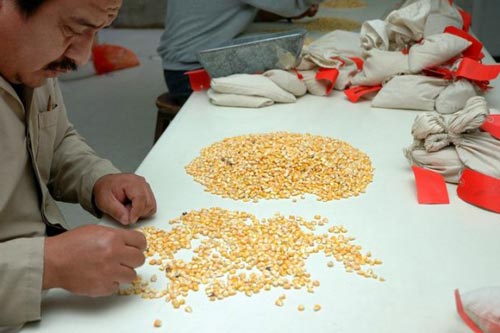This blog was originally posted here by the CGIAR Research Program on Climate Change, Agriculture and Food Security (CCAFS).
By Caity Peterson (International Center for Tropical Agriculture (CIAT))

1 + 2 definitely equals 3. No one needs to question elementary math.
But what happens if you try to add words? Does peanut + butter = peanut butter? Not really. Enter the terms separately in a web search engine, and you’ll get a different result than if you enter the two together. And genes? As it turns out, basic addition won’t work with them, either.
Research from the International Maize and Wheat Improvement Center (CIMMYT) has elicited an unusual hiccup in breeding for stress tolerance in maize: drought tolerance + heat tolerance does not = drought and heat tolerance. That is to say, the genes responsible for tolerance to the combined stressors of heat and drought are not the same as the genes for tolerance to either of those stressors alone.
A maize plant that has been bred to tolerate high temperatures or drought, or even both, is distinct from a plant that has been bred to tolerate simultaneous exposure to both stressors – the latter has the “combo” trait, let’s say, while the others have the “solo” trait. Even if a variety features both of the solo traits, that doesn’t necessarily add up to the combo trait. This may seem like a small detail, but it means that when the combo drought/heat trait is not present a cultivar expressing drought tolerance could still experience markedly diminished yields when hit with a simultaneous blow of heat stress.
CIMMYT and CCAFS are now rolling out strategies to ensure that improved varieties are productive even when exposed to multiple, concurrent stressors.
Read the rest of the story here.
 Climate adaptation and mitigation
Climate adaptation and mitigation